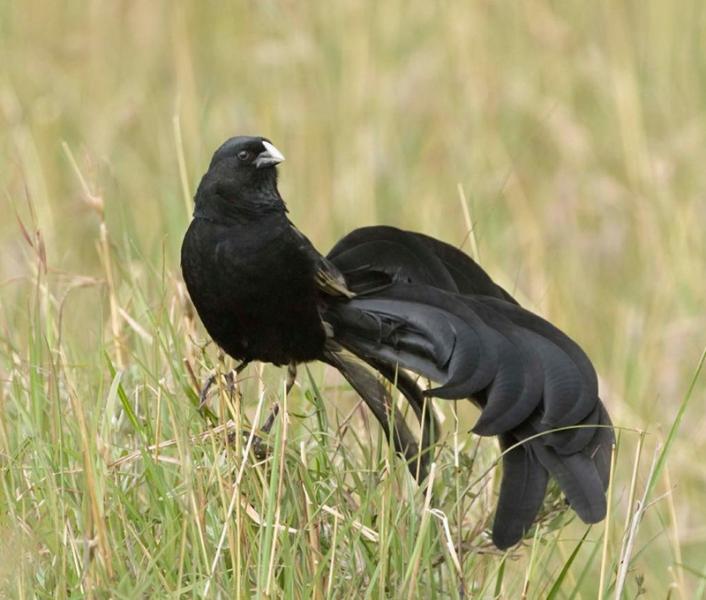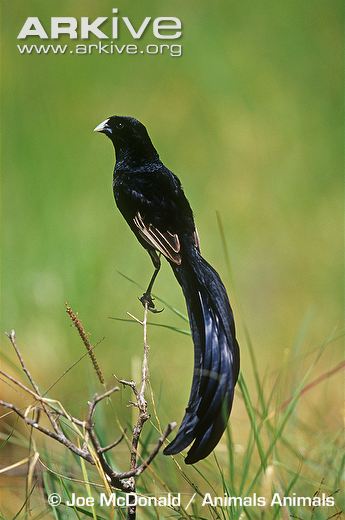
Euplectes jacksoni
SUBFAMILY
Ploceinae
TAXONOMY
Drepanoplectes jacksoni Sharpe, 1891, Kikuyu, Kenya.
OTHER COMMON NAMES
English: Jackson’s widow, Jackson’s dancing whydah; French:
Euplecte de Jackson; German: Leierschwanzwida; Spanish:
Obispo de Jackson.
PHYSICAL CHARACTERISTICS
5.5 in (14 cm) with long tail 11.4 in (29 cm); female 1.0–1.5 oz
(29–42 g), male 1.4–1.7 oz (40–49 g). Breeding male black with
BEHAVIOR
Gregarious, roosting in reedbeds and breeding there. Flocks
move daily up to 19 mi (30 km) to forage when not breeding.
FEEDING ECOLOGY AND DIET
Fruit, seeds, including large, hard-shelled seeds, and insects. In
non-breeding season often forages in forest, feeding on fruit in
canopy, also on the ground.
REPRODUCTIVE BIOLOGY
Colonial, some males polygynous. Nest highly distinctive, woven
of very fine reed strips, slung between upright stems, with
large side entrance. Built by male; once female accepts nest,
male reduces entrance to a narrow circular hole. Female lines
nest. Lays two to five eggs in summer. Incubation 14–16 days,
fledging 19–22 days. Female alone incubates, feeds young.
CONSERVATION STATUS
Not threatened; widespread and range expanding in some areas
such as Zimbabwe and South Africa.
SIGNIFICANCE TO HUMANS
None known.
Photo Gallery of - Jackson’s widow-bird




 Animalia Life
Animalia Life